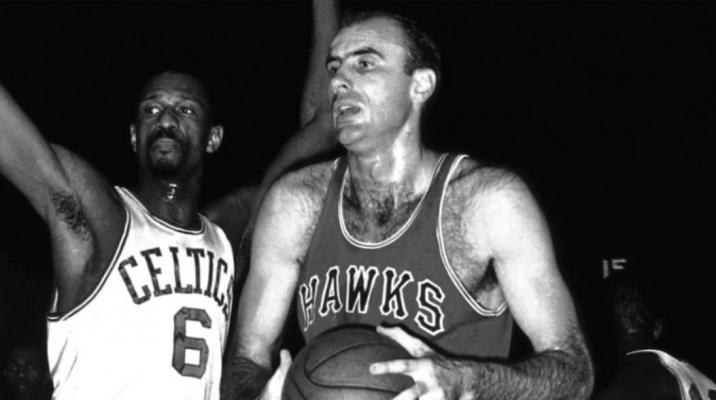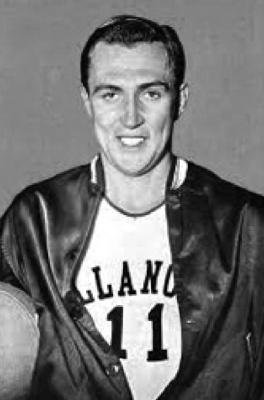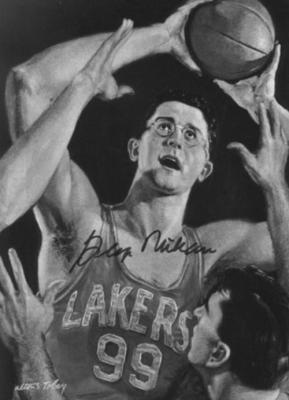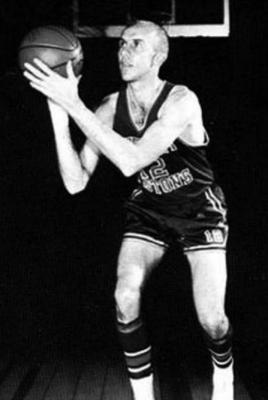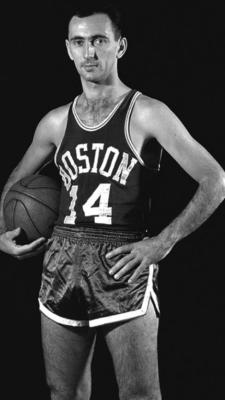Picking best NBA players thankless task
Seems like everywhere I turn there is ongoing debate about who are the best players in NBA history. Sports channels on television have their experts debating the issue. You can find that discussion in the print world and on the internet. The hot topic of discussion is who is the best player of all time and it usually evolves into a debate about whether LeBron James is a more talented player than Michael Jordan or vice versa. I don’t want to get involved in such discussions--but how many championships has James’ teams earned and how many did Jordan’s teams have? The answer to that question says a lot.
I have seen a couple of opinions--my guess is that the authors of these opinions are over 50-- suggest that players such as Kareem Abdul-Jabbar or Bill Russell or Wilt Chamberlain or Jerry West or Elgin Baylor or Oscar Robertson--might be worthy of consideration along with James and Jordan.
As the current NBA season winds down, I have seen dozens of lists compiled by this expert or that expert on the Top 50 or Top 75 or Top 100 players in NBA history. Just about everyone I have seen gets me to thinking about all those whose names were omitted. Compiling such a list is a thankless task and I refuse to participate. There just have been too many very good players over the years.
However, I have decided to put together a list of players (mostly from years ago) who usually get left off such lists. As those who know me know quite well, I enjoy reminiscing. In doing this I am not suggesting these players could match up well with the very talented, athletic players of today. But they were outstanding in the years they played.
One player who dominated the league years ago was George Mikan. Mikan was in the twilight of his NBA career in the mid-1950s when I became acquainted with pro basketball. But he was good enough to earn the title “Mr. Basketball.” He had earned All-American status three times as a player for DePaul in the 1940s and then went on to play for the Chicago Gears in the National Basketball League. In 1947, the NBL and the Basketball Association of America merged to become the NBA. In the new NBA, Mikan became a member of the Minneapolis Lakers. He was 6-foot-10 in an era when players his height were few and far between and was able to use his size to be a dominate player. He had a hook shot that he developed in college and it continued to be “unstoppable” in the pro ranks. His teams won seven NBA championships in his 10 seasons of playing and he was the scoring leader three times. He was so dominant that he prompted several rules changes including one banning goaltending, the widening of the foul lane (known as the Mikan Rule) and the creation of the shot clock. Two things I especially remember about him is the thick black glasses he wore and his number (99). After his retirement as a player and a coach (he coached the Lakers for two seasons), he helped found the American Basketball Association and was instrumental in founding the ABA Minnesota Timberwolves which is now a member of the NBA. He worked in his later life to increase the pensions of players who retired before the league became the financial force it now is. Mikan’s top salary as a player was $12,000. Compare that with what Kevin Durant or James is making today.
Another player of note in my memory is Bob Pettit. Pettit played 11 seasons in the NBA starting with the Milwaukee Hawks, which became the St. Louis Hawks in 1955 and then the Atlanta Hawks in 1968. Pettit retired in 1965 before the team moved to Atlanta. He was thought to be big at 6-foot- 9, and I remember that he was called a power forward, the first time I had heard that designation. During much of his career, the two best teams in the NBA were the Hawks and the Boston Celtics and they battled it out several times for the NBA championship. St. Louis and Pettit won in 1958, the only time a team that he played for won the NBA title. He was one of the first NBA players to score 20,000 points during his career. He had been an All-American at LSU before turning pro. I remember that Clyde Lovellette (a former Kansas All-American) was a Hawks teammate of Pettit and so was Cliff Hagan, a former star at Kentucky. I had one thing in common with Pettit. He wore No. 9 as a Hawk. I wore No. 9 one year in high school.
George Yardley has to be a player I mention in this space. He was one of my favorite players back in the day and the reason was simple. He was bald. Watching this bald player who looked years older than anyone else on the floor play so well was intriguing to my young eyes. He played first for the Fort Wayne Pistons and then continued with the Pistons when they moved to Detroit. He later played a season with the Syracuse Nationals before retiring. I remember the television announcers describing him as a “player with a lot of flair.” With his bald head and his style of flamboyant play he was easy to watch. Yardley became the first NBA player to score 2,000 points in a season, breaking George Mikan’s scoring record. When the American Basketball League formed in 1961, Yardley was recruited by the Los Angeles Jets who promised him $500 a game and he would be only required to play home games. He said that he didn’t always get the promised check and when he did it bounced. So he retired for good. The ABL dissolved a year later.
Paul Arizin was a player for the Philadelphia Warriors from 1950-1965 and is another one I’d like to highlight. He was a Villanova All-American who at 6-4 went on to play small forward in the NBA. He led the league in scoring twice and what I remember about him was his jump shot, which was somewhat unique in his era. His shots didn’t have much arch on them but he was deadly shooter. He played in 10 NBA All-Star games back in a time when the All-Star game wasn’t the farce it is today. He chose to retire when the Warriors moved from Philadelphia to San Francisco in 1962. He was a teammate with Tom Gola and Wilt Chamberlain during the later stages of his NBA career.
I remember Dolph Schayes as being a dominant player in the 1950s with the Syracuse Nationals. Actually, his 16-year career spanned from 1948 to 1964. When the Philadelphia Warriors moved to San Francisco, the Nationals moved to Philadelphia and became the 76ers. Schayes moved with them and later became their coach. The Nats won the NBA championship in 1955. He was a good scorer, but was a more dominant rebounder and led the league one season in rebounding. His career totals were 18.2 points and 12.1 rebounds per game.
Bob Cousy is a name I rarely see listed among the greatest all-time players. However, Cousy was the top of his craft in the years he was playing as a member of the Boston Celtics. His Celtics career went from 1950 to 1963 and during those years Boston claimed six NBA championships. Cousy was known for his assists and was the assists leader for eight consecutive seasons. Nowadays, the behind the back pass and behind the back dribble are commonplace, but Cousy was a wizard at those tactics in a time when they were rare. I remember seeing his passes bounce off the chests of teammates who didn’t anticipate a pass coming their way. Cousy was one of first great point guards.
Tom Havlicek is another Celtics player who doesn’t make too many 50 best player lists. But he was a good one. He was a member of the Ohio State team that won one national championship and finished second the next two years. In college he was overshadowed by teammate Jerry Lucas, but really had a stronger NBA career than Lucas. Havlicek was known for his defense and may have been one of the best defenders to play the game. Like many other Celtics, he played on quite a few NBA championship teams.
This list isn’t being submitted as my suggestions for a Top Players list. It is simply a very incomplete listing of some players who stand out in my recollection and who no longer receive much recognition by those who do compile such lists.

